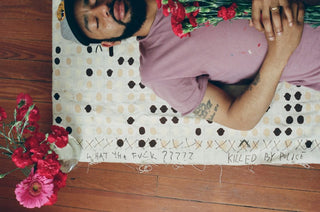After unarmed 18-year-old Michael Brown was killed at the hands of Ferguson, Missouri police officer Darren Wilson, without any justice for Brown or his community, Esteban Whiteside’s creative purpose shifted to using paint and canvas to spark—and in some cases, force—conversations about police violence, power structures, and the injustice system.
You may have seen the Washington, DC-based artist’s paintings in the recently-released season of Spike Lee’s Netflix series “She’s Gotta Have It.” Lee has been creating powerful films about racism in America for decades, like “Do the Right Thing” and, more recently, “BlacKkKlansman.” He, like Whiteside, has an ability to speak truth to power—so the collaboration is a powerhouse fit.
Like nearly every societal problem in the United States, police violence is rooted in centuries of racism. Take a look at the facts: although black people make up only 13 percent of the population, 25 percent of the 1,147 people killed by police last year were black. According to the research collective Mapping Police Violence, black people are three times more likely to be killed by police than their white peers, and, like Brown, 30 percent of black victims in 2015 were unarmed.
I met up with Whiteside in his studio to talk about his creative journey, how he intends to change the injustice system through art, and how he connected with the legendary filmmaker Spike Lee.
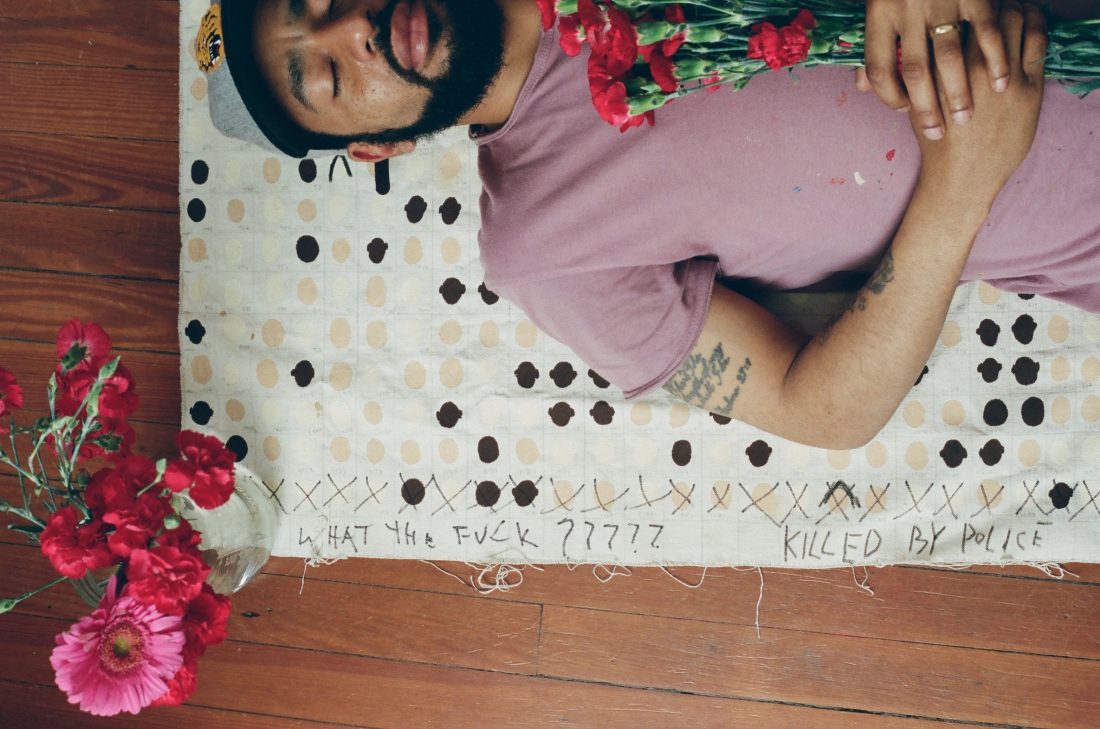
KRISTEN STRADER: I know you were just featured big time in the second season of Spike Lee’s Netflix series “She’s Gotta Have It.” Congratulations! How did Spike find your work and what is that relationship like?
ESTEBAN WHITESIDE: First off, thank you. I was contacted through Instagram by a gentleman who said he was a production director for Spike Lee “She’s Gotta Have It.” We started talking and he asked me if I would be interested in showing some of my work on season two of the show.
So, of course, I was freaking out and told him I would absolutely be interested. He said he was going to share my work with Spike himself and if Spike liked it, they would give me a call back. Long story short, Spike liked the work and they contacted me about certain pieces and we went from there. I’ve never actually spoken to Spike personally, but I hope to meet him at some point.
That must have been a surreal moment. Do you remember when you discovered Spike’s work for the first time and how you felt?
The first time I discovered Spike’s work was the movie Crooklyn. I remember picking it up, watching it with my mom and my brother, and feeling all types of emotions. I was super happy at times throughout the movie but also extremely sad, and just never wanted to watch the movie again. Back then, if a movie made me sad, I didn’t watch it again. I loved the movie, though.
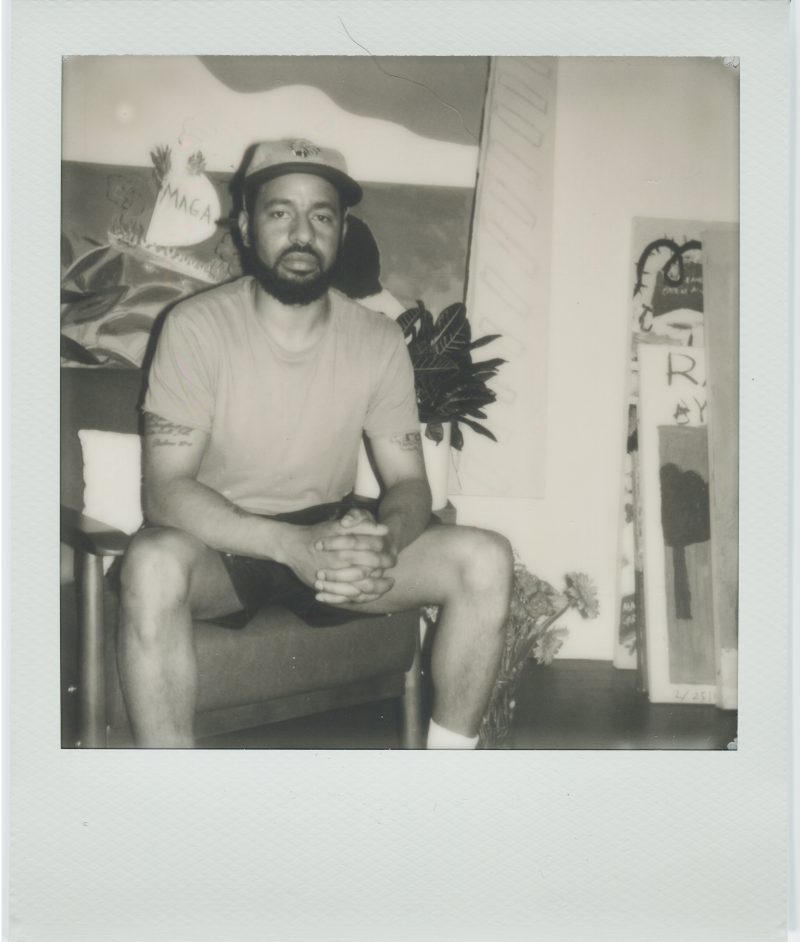
Much of your work focuses on police violence and the murders of black and brown people in america. the injustice system has long needed to change. How does your work aim to change the system?
I feel like my work can create discussion and that’s a start. Right now, not enough people are talking about how bad law enforcement and the justice system are and it drives me crazy. I want oppressed people to see my work and feel powerful and I want oppressors to see it and feel shame. Three people get killed by police every day in Amerikkka and that should be a bigger fucking deal to everyone.
Absolutely. What kind of reactions do you see when people view your work?
I get very polarizing reactions. People are either all for the message or they absolutely hate it. I’ve had people tell me that my work was bullshit and racist. As long as i’m getting strong reactions, I feel like I’m doing the right thing.
Police power has gone unchecked for centuries. When did you start making art about police violence?
I didn’t make any pieces about police brutality until I saw Michael Brown’s murder. I remember hearing about and seeing his body left in the street for hours on the blazing hot pavement. It really messed with me and totally changed my work forever. I was doing abstracts before that.
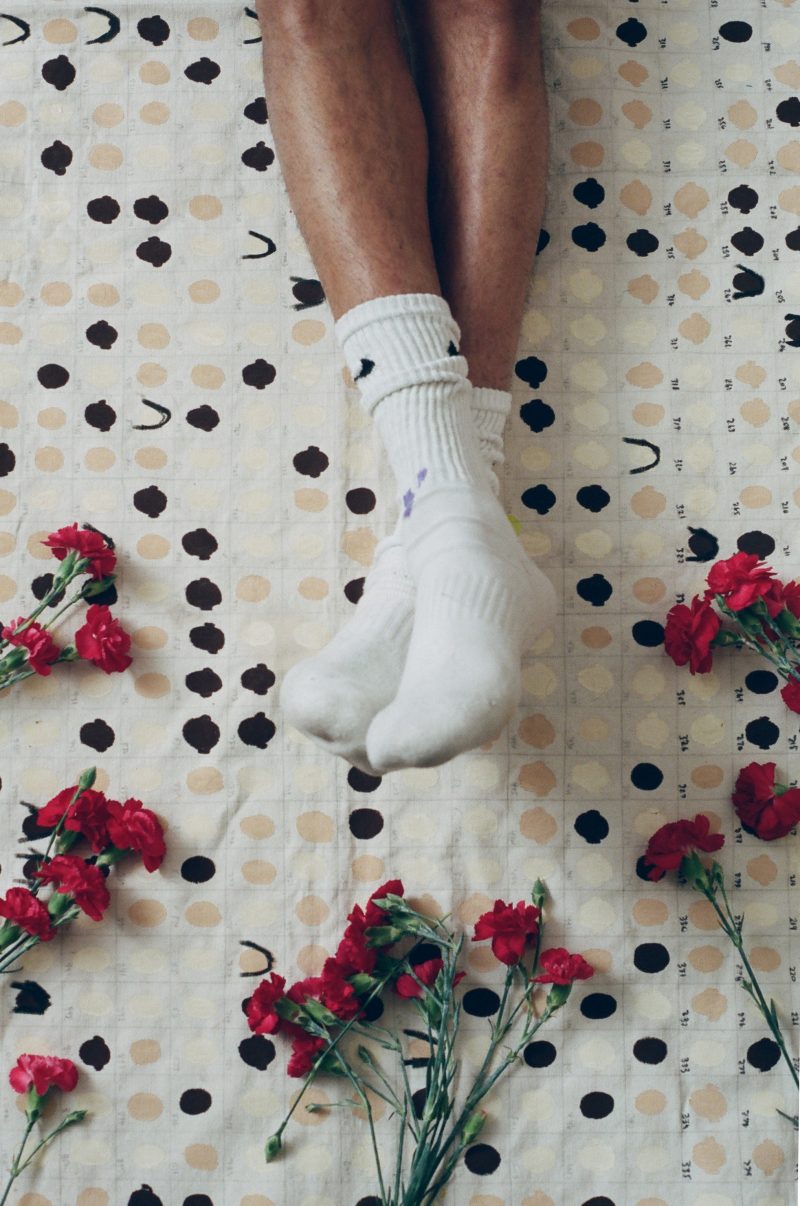
I’ve seen people who can’t take the realness of your work come after you online. How do you respond and can you talk about a time this happened?
Well, I respond by telling them that this is what makes me want to paint a piece in the first place and then I listen to what they have to say. Most of the time, it’s ignorant people who can only see one side or one perspective and if it doesn’t happen to them, they aren’t even willing to entertain the possibility that it could happen to someone else.
One time in particular at one of my shows, a black man came up to me and said, “Your blue Isis piece is bullshit.” He said, “I’ve never had any bad interactions with the police and I’m almost 60 years old”. So, I simply told him that I’m happy he hasn’t had any bad interactions with the police but last year 1,200 people got killed by the police, so that’s not the case for everyone.
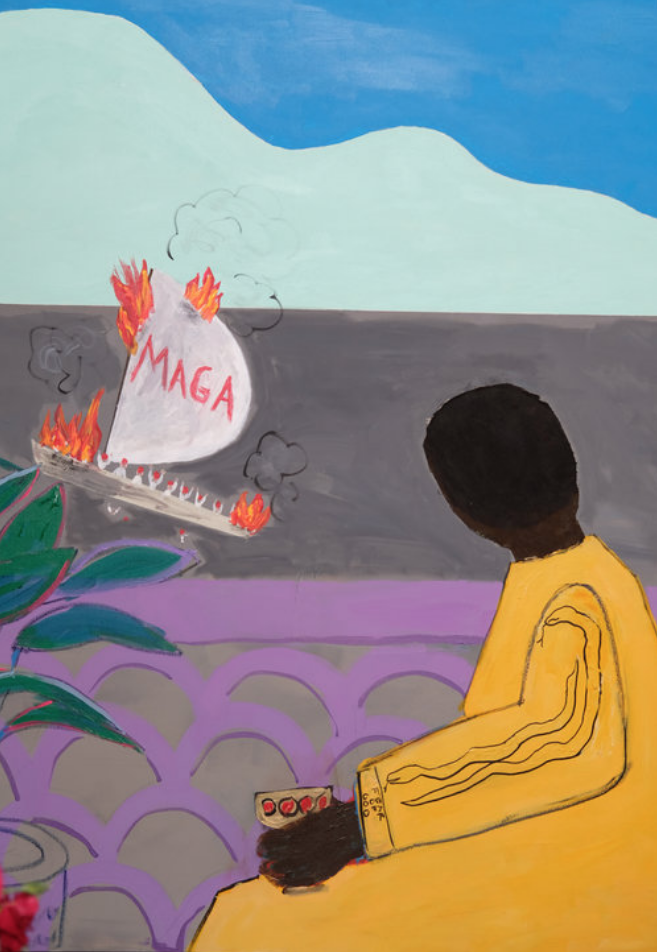
In some of your paintings, you connect America’s past with the present – like in your re-creation of Black Panther literature. This is something that Spike also does. What’s your intention in doing so?
My intention is to connect how much has not changed in all that time. You know, most of the same stuff that the panthers were speaking out against is the same stuff that’s still happening today.
Have you felt a change in DC’s energy since Satan took over the White House? How so?
I have felt the energy change. I definitely felt an energy change within myself but I have felt that change in other people as well. You know, it’s kind of a change in a good way because more people are speaking out now about everything this guy is supporting and stands for.
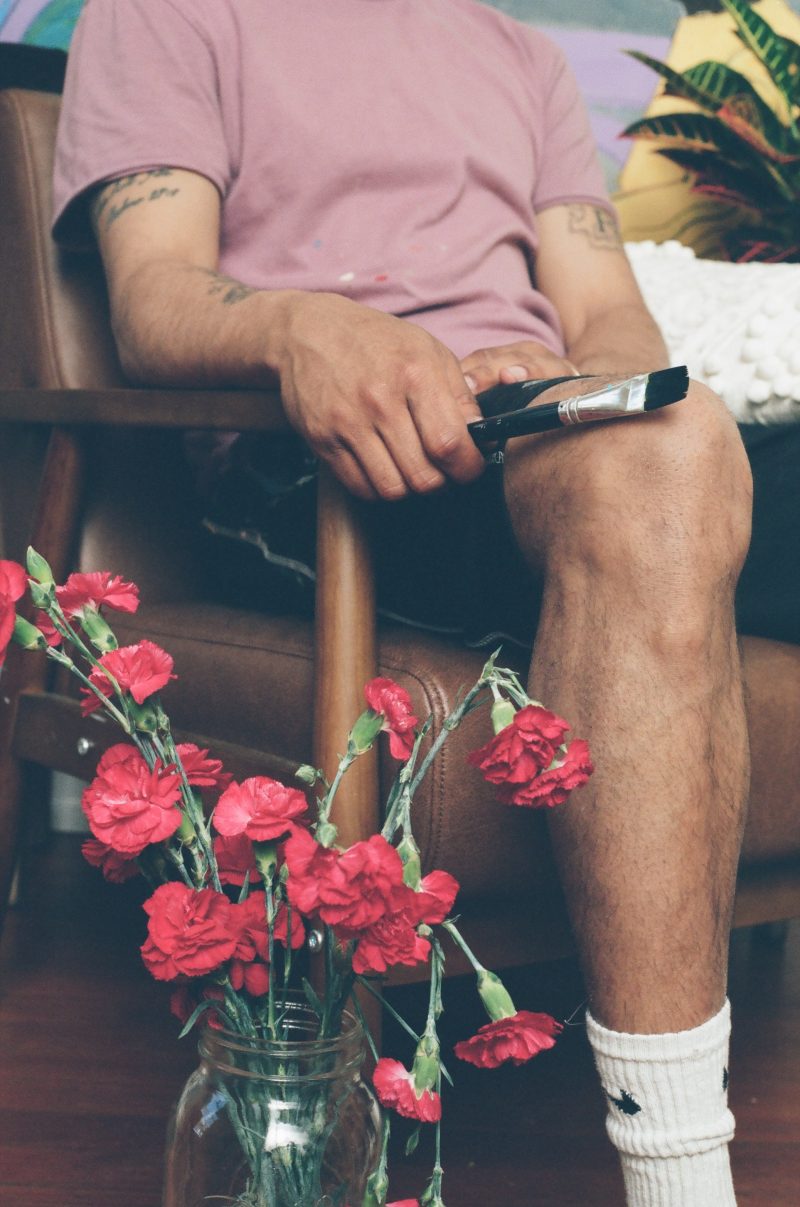
Can you talk about the meaning behind your name, “Esteban?” I’ve always knows you as Stephen, so I’m curious why and when you chose Esteban.
For years, I tried to figure out a signature that I liked. And then one day, I went to a Stuart Davis show and I thought he had the best signature that I had ever seen before. So that night I decided to started messing around with some different ways of writing my name and I just ended up writing Esteban and I thought it looked perfect. From that point on, I started signing my name Esteban on my work.
At one of my art shows, the curator called me Esteban and instead of correcting her I just kept going with it. Then, other people that came to the art show just assumed my name was Esteban because all the pieces were signed that way, so they called me Esteban and it just kinda stuck.
How do you start your days? When is your prime creation time?
I start my days by taking my dogs Pablo and Francis on a walk with my wife and then we come back and have breakfast before going to work. My prime creation time is from about 11 o’clock at night until three in the morning.
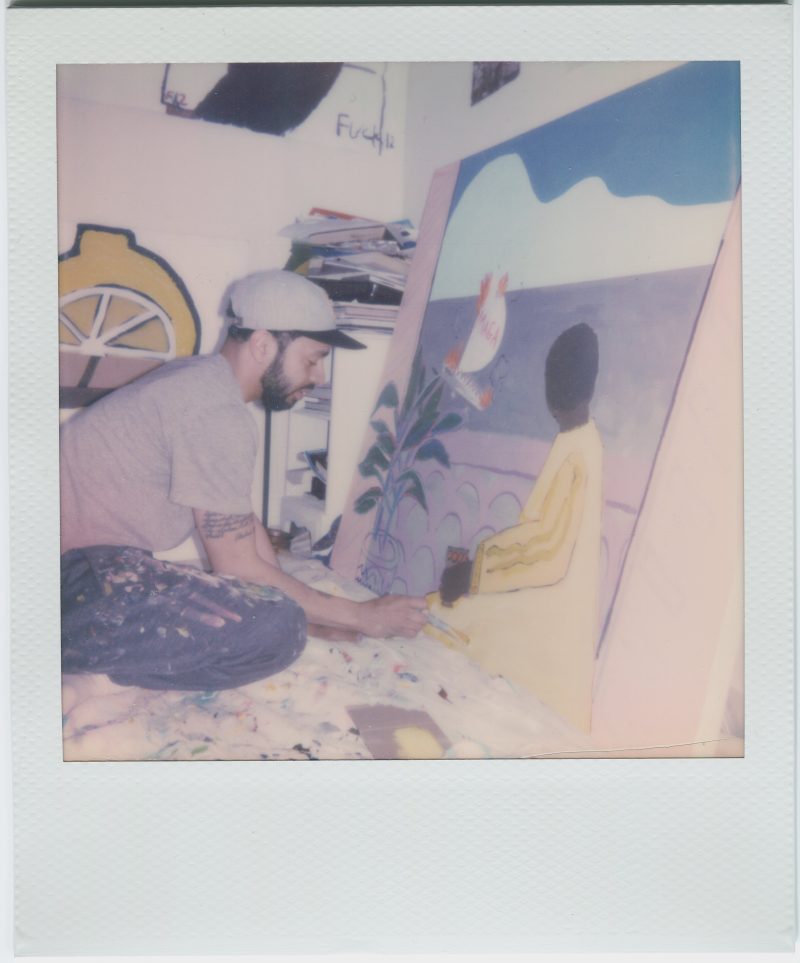
Do you ever experience creative blocks? If so, how do you push through it?
I definitely experience blocks and when that happens I tend to want to paint something abstract just to keep painting because I feel much more relaxed when I paint. I like to read news headlines and stories from people like Shaun King to get ideas. I also just sit and think “what am I pissed at right now?” or “who is getting screwed over by the man right now?” Then, I paint something that has to do with that.
Where do you find inspiration?
I find inspiration from people that are oppressed. I also find some inspiration from music but the majority of my ideas come from some sad, real stuff in the news.
What’s next for you?
I want to start doing more pieces on wood and maybe get into sculptures a little bit but still keep the same themes that are in my work right now. I also want to do more work on paper. I hope to get my work in some galleries around DC.
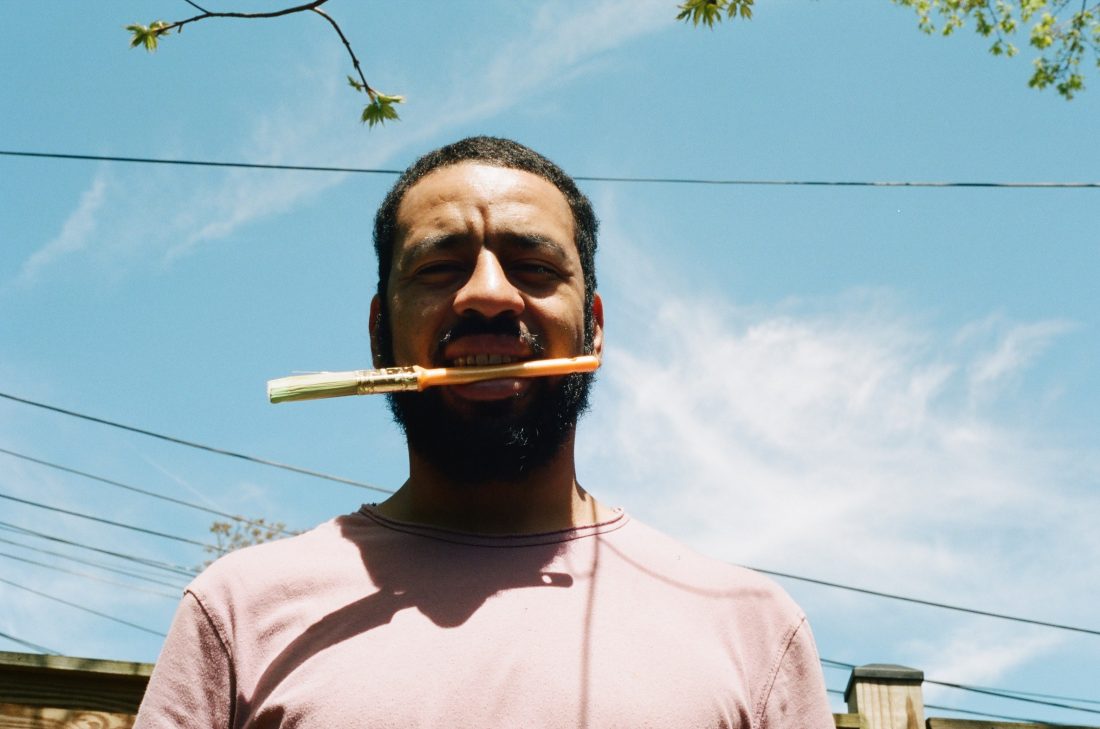
Watch Season 2, Episode 3 of “She’s Gotta Have It” and find Esteban’s work here.
Photos shot by Kristen Strader on 35mm and Polaroid film.
***

